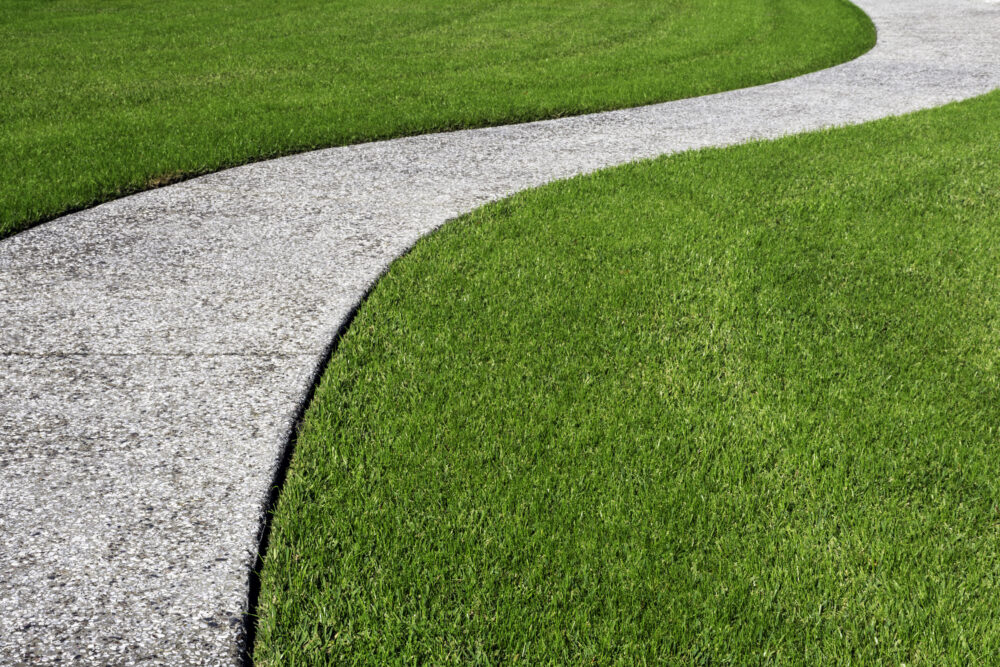Zoysia vs. St. Augustine: Choosing the Right Grass for Your North Texas Lawn
Choosing the right grass for your lawn can be a tough decision, especially with the diverse climate of North Texas. Two popular choices for homeowners are Zoysia and St. Augustine. Both offer attractive green lawns, but they have distinct characteristics that make them better suited for different needs and preferences.
At Abracadabra Lawn & Pest Control, we highly recommend Zoysia over St. Augustine for most North Texas lawns. St. Augustine is more prone to disease issues and isn’t as drought-tolerant, which is a big deal in our climate. It can also suffer winter kill during extremely cold winters with ice and snow. Overall, Zoysia is a more durable and resilient choice. It’s also the best option for shade and transitions better into Bermuda grass if you have mixed grasses in your lawn.
Let’s take a closer look at why Zoysia might be the right choice for you:

Zoysia Grass: Durable and Drought-Tolerant
Zoysia is a warm-season grass known for its fine texture, dense growth habit, and excellent drought tolerance. It’s a popular choice in North Texas due to its ability to withstand the hot summers and occasional water restrictions.
Pros:
- Drought Tolerance: Zoysia requires less water than St. Augustine, making it a more sustainable choice for water conservation.
- Durability: It can withstand heavy foot traffic and is less prone to damage from pets and children.
- Low Maintenance: Once established, it requires less mowing and fertilizing than St. Augustine.
- Shade Tolerance: While it prefers full sun, Zoysia can tolerate moderate shade better than St. Augustine.
- Pest and Disease Resistance: Zoysia is generally more resistant to common lawn pests and diseases.
- Better Transition with Bermuda: If you have Bermuda grass in your lawn, Zoysia blends more seamlessly with it than St. Augustine.
Cons:
- Slow Establishment: Zoysia takes longer to establish than St. Augustine, requiring more patience during the initial growing phase.
- Thatch Build-up: Zoysia can develop thatch over time, requiring occasional dethatching to maintain healthy growth.
- Winter Dormancy: Zoysia goes dormant in the winter, turning brown until spring.
St. Augustine Grass: Lush and Fast-Growing
St. Augustine is another warm-season grass known for its thick, lush appearance and rapid growth rate. It creates a carpet-like lawn that’s soft to the touch.
Pros:
- Fast Establishment: St. Augustine establishes quickly, providing a lush lawn in a shorter time frame.
- Thick Growth: Creates a dense, lush lawn that can help suppress weeds.
Cons:
- High Water Needs: St. Augustine requires more frequent watering, especially during hot summer months.
- Susceptibility to Pests and Diseases: It’s more prone to diseases like brown patch and pests like chinch bugs.
- Higher Maintenance: Needs more frequent mowing and fertilizing compared to Zoysia.
- Less Cold Tolerant: Can suffer winter damage in extremely cold temperatures.
Which Grass is Right for You?
While we generally recommend Zoysia for its durability and resilience, the best choice for your lawn ultimately depends on your specific needs and priorities:
- For low-maintenance and drought tolerance: Zoysia is the better choice.
- For a lush, fast-growing lawn (and you don’t mind the extra care): St. Augustine might be preferred.
Abracadabra Lawn & Pest Control: Your Lawn Care Partner
At Abracadabra Lawn & Pest Control, we offer comprehensive lawn care services, including fertilization, weed control, and pest management, to keep your lawn healthy and thriving, regardless of the grass type you choose.
Contact us today for a free lawn evaluation and let our experts help you achieve the lawn of your dreams!
